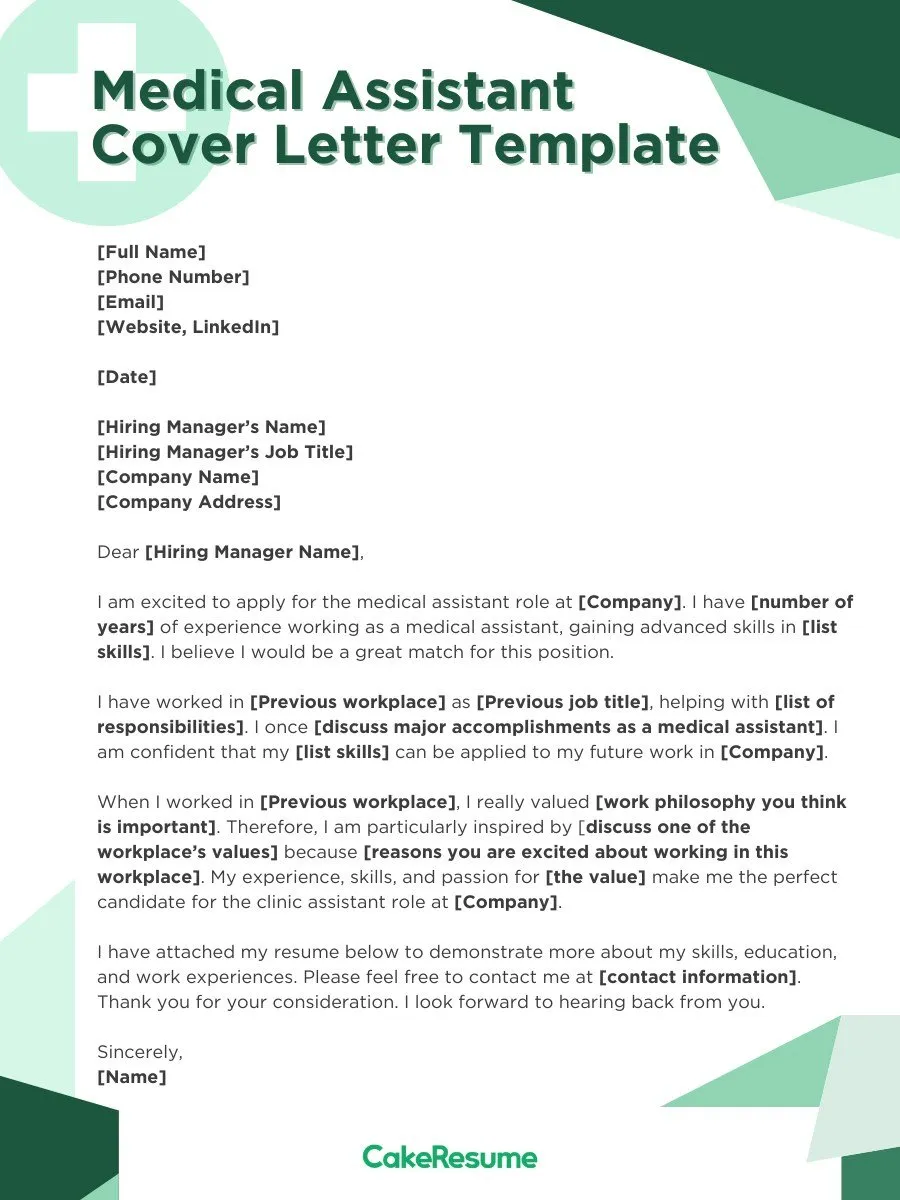Medical Assistant Cover Letter Essentials
A well-crafted cover letter is your first opportunity to make a strong impression on a potential employer and is a critical component of a successful job application. For Medical Assistants, whose roles demand both technical proficiency and interpersonal skills, the cover letter is especially crucial. It provides a platform to showcase your personality, highlight relevant experiences, and articulate your unique value proposition. This guide will walk you through the essential elements of creating a compelling cover letter that effectively markets your qualifications and increases your chances of landing an interview. By following these guidelines, you can significantly improve your chances of standing out in a competitive job market and securing your desired position as a Medical Assistant.
Contact Information and Formatting
The foundation of any professional cover letter begins with accurate and properly formatted contact information. Presenting your contact details and the hiring manager’s information correctly sets a professional tone and ensures ease of communication. Proper formatting enhances readability and makes your letter look polished and organized. Attention to detail in this initial section demonstrates your professionalism and commitment to quality.
Your Contact Information
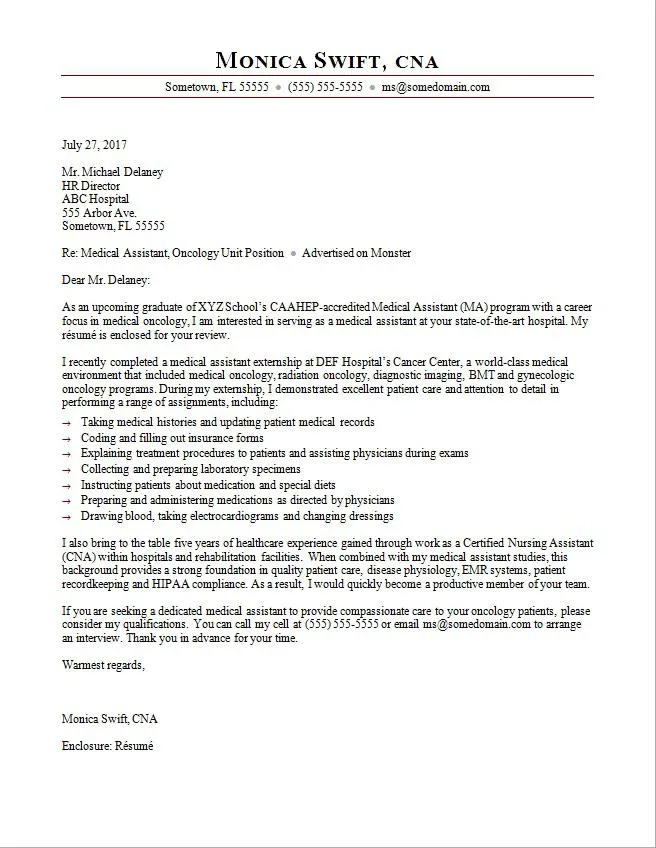
Begin by placing your contact information at the top left or right corner of the letter. This should include your full name, address, phone number, and a professional-looking email address. Avoid using nicknames or informal email addresses. Ensure your phone number and email address are up-to-date and checked frequently for messages. Accuracy in this section is vital, as it’s the primary way employers will contact you for interviews or further communication. This information should be clearly visible and formatted consistently.
Hiring Manager’s Contact Information
Directly below your contact information, on the left side, include the hiring manager’s information if available. This typically consists of their full name, title, and the company’s address. Researching the hiring manager’s name shows initiative. If you are unable to find a specific name, use a general title such as ‘Hiring Manager’ or ‘Human Resources Department.’ This personalized approach, when possible, demonstrates your attention to detail and your genuine interest in the position.
Formatting Best Practices
Maintain a professional and easy-to-read format. Use a standard font such as Times New Roman, Arial, or Calibri, and set the font size to 11 or 12 points. Single-space the body of the letter and use a single space between paragraphs. Left-align the text, avoiding justification, which can create uneven spacing. Ensure there is enough white space around the text to make it visually appealing and easy to read. This attention to formatting enhances the overall impression of your application.
The Opening Paragraph
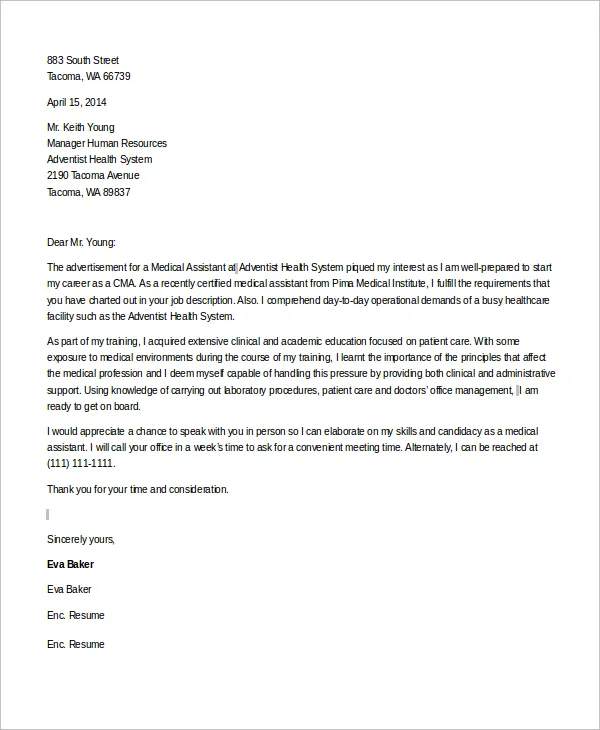
The opening paragraph is your first chance to capture the reader’s attention. It should immediately state the position you are applying for and how you found the job opportunity. The goal is to make a positive and memorable first impression, setting the tone for the rest of the letter. A strong opening indicates your level of interest and your understanding of the job requirements. An effective opening paragraph engages the reader and encourages them to continue reading.
Expressing Your Interest and Enthusiasm
Begin with a clear statement of your interest in the specific Medical Assistant position. If you were referred by someone, mention their name; this can provide an initial connection. Express your enthusiasm for the opportunity, highlighting what specifically attracts you to the role or the company. Demonstrate that you have researched the organization and understand its mission or values. This will show your genuine interest and your ability to connect with the employer’s goals.
Tailoring Your Introduction
Customize your introduction to match the job description. Reference specific keywords or requirements mentioned in the job posting. Show how your background and aspirations align with the role and the company’s needs. Avoid generic opening statements; instead, craft a unique introduction that reflects your individuality and your understanding of the specific position. A tailored introduction shows that you have taken the time to carefully consider the opportunity.
Highlighting Your Skills and Experience
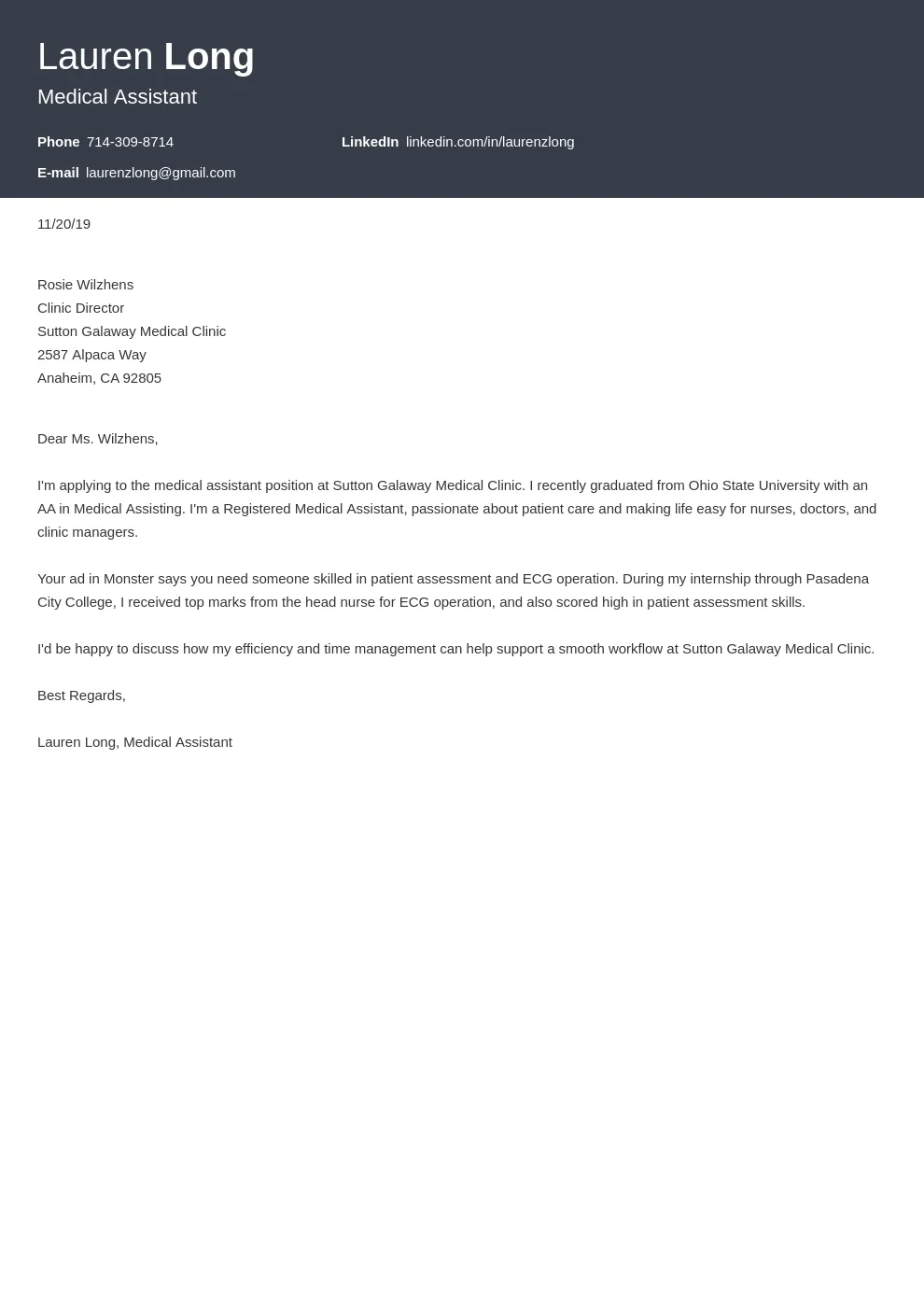
This is the main body of your cover letter where you provide details about your skills, experience, and qualifications that align with the job requirements. Focus on demonstrating how your skills and experiences match the needs of the role and the organization. Use specific examples to support your claims and quantify your accomplishments whenever possible. Be sure to highlight a blend of technical and soft skills, showing you are a well-rounded candidate.
Clinical Skills
Detail your clinical skills. Mention your experience with taking patient histories and vital signs. Include experience with assisting physicians during examinations and procedures. List any certifications you hold, such as CPR or Phlebotomy certifications, and quantify your skills by giving examples of the number of patients you’ve worked with or specific procedures you have performed. Focus on the most relevant skills for the medical assistant role, showing what you can immediately contribute to the workplace. Ensure that your information is easy to understand for the hiring manager, and organized in a logical manner.
Administrative Skills
Highlight your administrative abilities. Describe your experience with scheduling appointments, managing patient records, and handling insurance claims. Mention any software or electronic health record (EHR) systems you’re familiar with. Include your communication abilities, as you’re likely to be on the phone, interacting with patients. Quantify your skills by mentioning the number of appointments scheduled or the efficiency of your record-keeping. Provide context for your skills, describing your contributions in previous roles.
Soft Skills
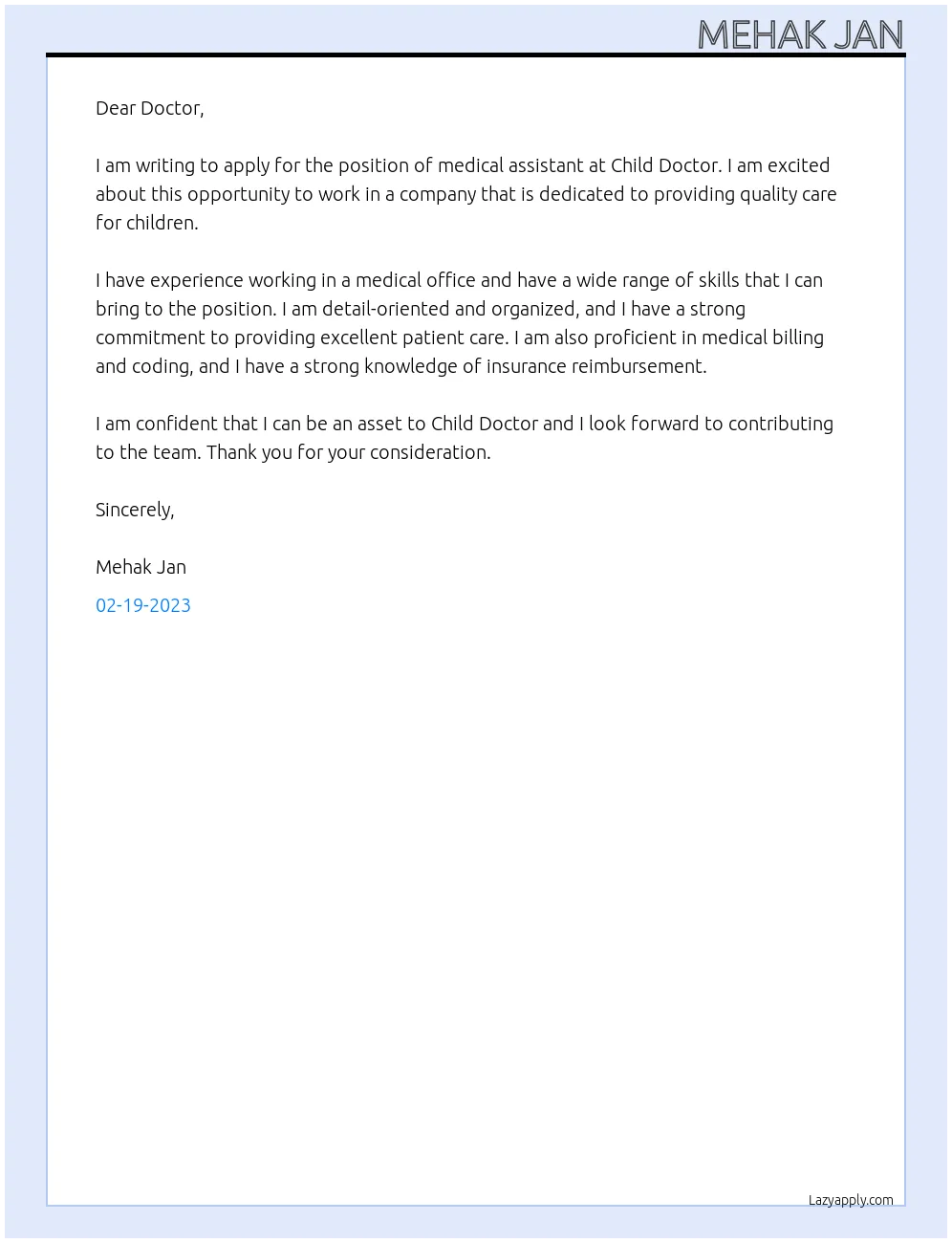
Emphasize your soft skills, such as communication, empathy, and teamwork. Explain how you handle patient interactions, and showcase your ability to work under pressure. Discuss your conflict resolution skills and your commitment to patient care. Provide examples of times you used these skills in previous roles to improve patient outcomes. Use action verbs to describe these soft skills, showing that you’re able to effectively work with others. Highlight specific achievements to show how your soft skills have added value in the past.
Quantifying Your Achievements
Quantify your accomplishments wherever possible. Instead of saying that you ‘improved patient satisfaction,’ state ‘increased patient satisfaction scores by 15%.’ Use numbers to demonstrate the impact you had in previous roles. This will provide concrete evidence of your abilities. Focus on outcomes, such as reduced waiting times or increased efficiency. By quantifying your achievements, you make your qualifications more compelling.
Showcasing Your Achievements
Focus on your key achievements in previous positions. Use the STAR method (Situation, Task, Action, Result) to explain your experience and achievements. Describe the situation or challenge, the task you were assigned, the actions you took, and the positive results. This structured method offers a clear and concise way to demonstrate your ability to perform. Use strong action verbs to highlight what you did, and clearly show the positive results of your actions, making it easier for the hiring manager to understand your impact.
The Closing Paragraph and Call to Action

Your closing paragraph should summarize your interest in the position and encourage the hiring manager to take action. It’s your final opportunity to reinforce your qualifications and show your enthusiasm. A well-crafted closing provides clarity, reinforces the positive impression you want to leave, and provides the next steps in the application process. It should also be professional, ensuring that you end your cover letter on a positive note.
Reiterating Your Interest
Reiterate your interest in the position and the company. Briefly summarize why you are a good fit for the role. Show that you understand the role and are enthusiastic about the prospect of contributing. Show that you have researched the company. Restating your interest reinforces your commitment to the opportunity and reminds the hiring manager of your key strengths.
Expressing Gratitude
Thank the hiring manager for their time and consideration. Expressing gratitude is a polite and professional gesture that shows respect. Avoid sounding overly generic, and instead, demonstrate your appreciation for their consideration of your application. This simple act can leave a positive impression and set you apart from other applicants.
Call to Action
End with a clear call to action. State your availability for an interview and provide your contact information again. Express your willingness to discuss your qualifications further. Ensure the hiring manager knows how to contact you. Making it easy for the hiring manager to take the next step increases the likelihood of getting an interview and demonstrates your professionalism.
Proofreading and Editing
Proofreading and editing your cover letter is a critical final step in the application process. Errors in grammar and spelling can undermine your credibility. Thorough proofreading will enhance your professionalism and attention to detail, which are essential qualities for any Medical Assistant. Before submitting your cover letter, it is important to carefully check for errors, as any mistakes will damage the overall impression. A well-edited cover letter indicates your commitment to producing high-quality work.
Common Mistakes to Avoid
Avoid generic language and clichés. Refrain from using phrases that are overly common or that don’t provide specific examples. Don’t reuse the same cover letter for different jobs. Customize it for each position. Be specific to the role and the company. Avoid grammatical and spelling errors at all costs. Errors undermine your credibility. Don’t forget to proofread. Ensure that your tone is professional, enthusiastic, and aligned with the requirements of the job.
Proofreading Tips
Read your cover letter slowly and carefully. Print out a copy to review it more easily. Use a spell checker and grammar checker, but don’t rely on them entirely. Proofread multiple times to ensure you catch all errors. Ask a friend or family member to proofread it for you. A fresh pair of eyes can often catch errors that you might have missed. Ensure the layout is consistent and professional. Following these proofreading tips will help you submit a polished and professional cover letter.
